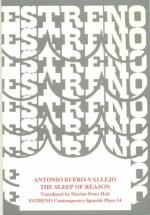|
This section contains 361 words (approx. 1 page at 400 words per page) |

|
The Sleep of Reason Summary & Study Guide Description
The Sleep of Reason Summary & Study Guide includes comprehensive information and analysis to help you understand the book. This study guide contains the following sections:
This detailed literature summary also contains Bibliography and a Free Quiz on The Sleep of Reason by Antonio Buero Vallejo.
The Sleep of Reason (El sueno de la razon) was first performed in 1970 and remains the principal work by which Antonio Buero Vallejo is known in the United States. Buero Vallejo's play is just one of many in his works devoted to criticizing Spain's long struggle to institute increased freedoms of speech and political action. The Sleep of Reason takes place in the Spain of 1823, just after the French invaded Spain to put the Spanish king, Ferdinand VII, back on the throne (the monarchy was thrown out of power for a three-year period called the Liberal Triennium), and focuses on the king's obsession to punish those he thinks oppose and threaten him. One man stands out: former painter to the king and one of the world's great painters, Francisco Goya (1746-1828). Not only is Goya a Liberal, a member of the Spanish faction opposed to unlimited powers of church and crown, but he has recently offended the king in a letter intercepted in the mail.
From one side The Sleep of Reason is a study in imperial repression. But more importantly, the work explores the effects of repression, threat, and intimidation on individuals, most importantly in this case, on Goya. The painter lives in fear of the political consequences of his affiliations, and as a direct or indirect result, exhibits a number of symptoms—from increased insecurity accompanying diminished sexuality, to auditory and visual hallucinations. Buero Vallejo's play is a timeless case study situated in political and psychological history.
Reflecting this depiction of both outer political and inner psychological states is the most memorable feature of The Sleep of Reason: the multimedia staging called for by the author. Like most plays it consists of actors in costume and props. But more impressively, the play is staged against the backdrop of large projections of Goya's puzzling and threatening Black Paintings (c.1820-1823), the amplified sounds of Goya's heartbeats and hallucinations, and the live fantasia of sinister dream figures dressed in grotesque costume. The combination of these effects as early as 1970 led one critic to call The Sleep of Reason the first work of "total theater" by a Spanish author.
Read more from the Study Guide
|
This section contains 361 words (approx. 1 page at 400 words per page) |

|



